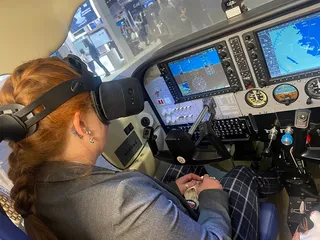The US Air Force BMT Modernization Imperative
Contact Our Team
For more information about how Halldale can add value to your marketing and promotional campaigns or to discuss event exhibitor and sponsorship opportunities, contact our team to find out more
The Americas -
holly.foster@halldale.com
Rest of World -
jeremy@halldale.com

Three converging forces are compelling the US Air Force to modernize its basic military training construct. At the strategic level, the Air Force and the other US services are pivoting to Asia, with major implications for individuals, units and staffs who heretofore have operated in set-in-stone assignments on paper: airmen and Space Force guardians in the 2023-era have the potential to take on new, emergent tasks during a conflict in that region.
As the US military continues to face recruiting challenges in its enlisted and officer ranks, Pentagon recruiting teams continue to grapple with different expectations, skill sets and other opportunities and challenges in the demographic profile of enlistment-eligible Americans.
These and other issues were discussed at the September 22, 37 Training Wing (TRW) media roundtable attended by MS&T.
Human Performance Factors in Zero Week Redesign
In a press release dated September 21, Lt. Col. (Dr.) Daniel Cassidy, Director of Human Performance at the 37TRW, provided a high-level overview of the background and changes to Zero Week – the first five days of the 7.5-week BMT course
“Resilience results from combining problem-solving skills with life-style habits that power them. By aligning training modules together that address human performance factors such as sleep hygiene, stress management and nutrition, along with allowing trainees to build relationships with their teammates, we can directly impact a trainee’s path.” While 37TRW focuses on these factors, legacy-era training attributes including physical training, basic drill and keeping recruit training living areas tidy will remain.
The Air Force is not making these BMT changes willy-nilly, but rather, is doing so after a successful beta test within two squadrons starting last December. The revamped Zero Week will start the first week of October.
Bridging Gaps
To be certain, Americans age-eligible for enlisting in the US military are very similar to their counterparts in other nations as they are tending to: voluntarily receive drivers licenses later; delay marriage; and in other cases, enter the workforce in their first substantive job at a later age – for starters.
Chief Master Sgt. Daniel Anderson, Senior Enlisted Advisor at the 737th Training Group, pushed back on the notion that differences in recruitment-eligible individuals – the older members of Generation Z, for instance – do not make them as mentally or physically tough as current armed service members. On cue, he added, “They didn’t grow up outside throwing rocks at the neighbor kids back and forth. They are digital natives. They think differently, they respond to stressors differently. And the approach to be able to effectively train them must be different, because it will be something different that is expected of them from the beginning of their time in service.”
On the topic of digital natives, the air and space services further recognize the importance of allowing new accessions to immerse themselves in technology, when feasible, during their training courses. To that end, the 37TRW is about to implement a new program that will allow recruits to take tablets they are issued during BMT into follow-on technical training. This program may be a stepping-off point for further immersing airmen and guardians in learning technology through their career. Indeed, Col. Lauren Courchaine, Commander. 37TRW, introduced the possibility that recruits and other new accessions would keep the tablet they are initially issued and receive a “device allowance,” similar to a uniform allowance, to permit the individual to upgrade the device after completing accession training. The command and the broader service are also being responsive to a trend that sees some learners wanting instructional resources and content in non-electronic formats.
Synchronizing Training to Strategy
As the Pentagon aligns its war-fighting strategies to the threat of conflict against China in the vast expanses of the Pacific, so, too, are the services preparing its operators to think beyond the predictability of scheduled deployments to familiar overseas bases and stations that were so comfortable and routine during the Iraq-Afghanistan wars. For the Air Force, this also means focusing its airmen on working in small teams in potentially remote locations in that theatre of operations. Accordingly, the Air Force will continue with its Pacer Forge exercise package, completed during the sixth week of training. The event is a 36-hour exercise during which time trainees are divided into small teams to work together in physically demanding scenarios based on real-world operations. At the end of the day, USAF is seeking Multi-Capable Airmen, able to perform assignments outside their specialty to allow the command the ability to quickly generate sorties and even replace casualties. Dr. Cassidy emphasized, “We’re preparing people to perform in situations we cannot predict and they cannot predict. The fundamental capability is problem- solving, and how do you optimize the training environment for the cultivation of problem-solving acumen that looks a little bit different than was required in decades past.”


.jpeg/r%5Bwidth%5D=320/63949ba0-5ccd-11f0-a7e0-e716671d4c80-a-professional-lifestyle-advertisement-f_eaZrd-beQ9aW5PqdGQZ_Jg_6_2H0ZNeRRqIWWtcGT_k3g%20(1).webp)